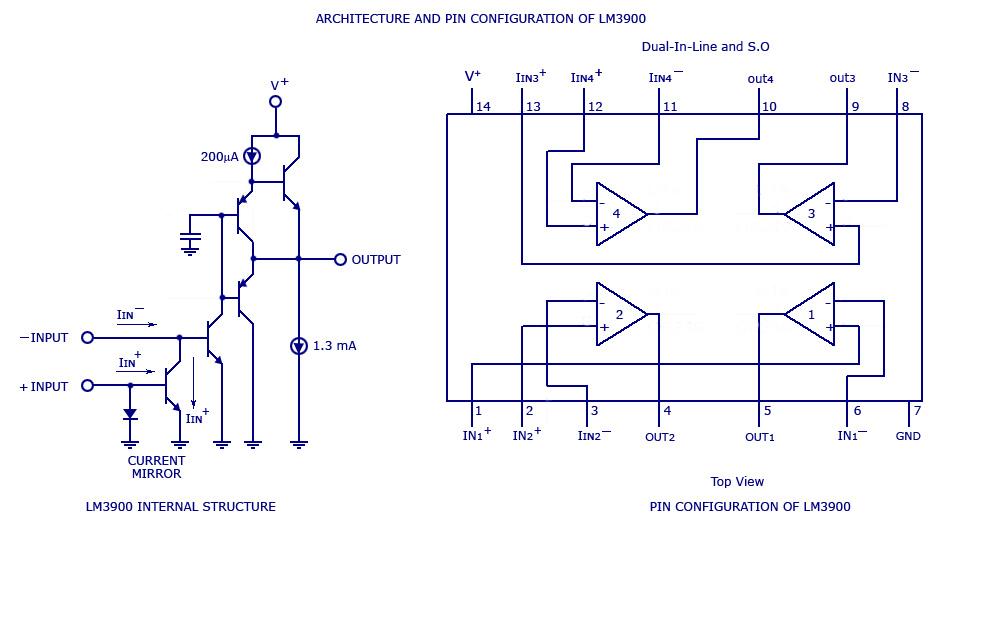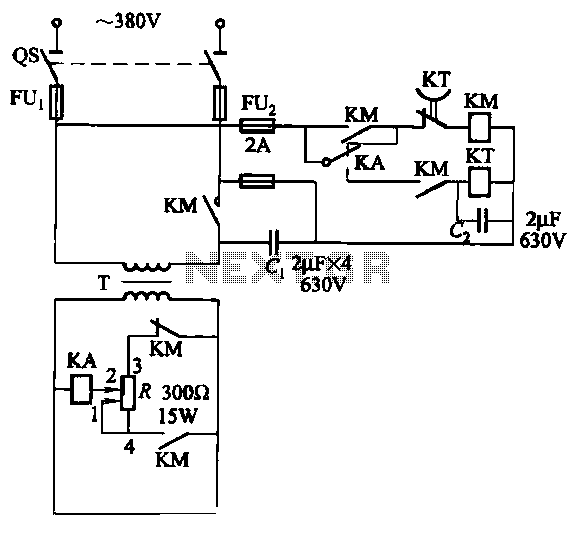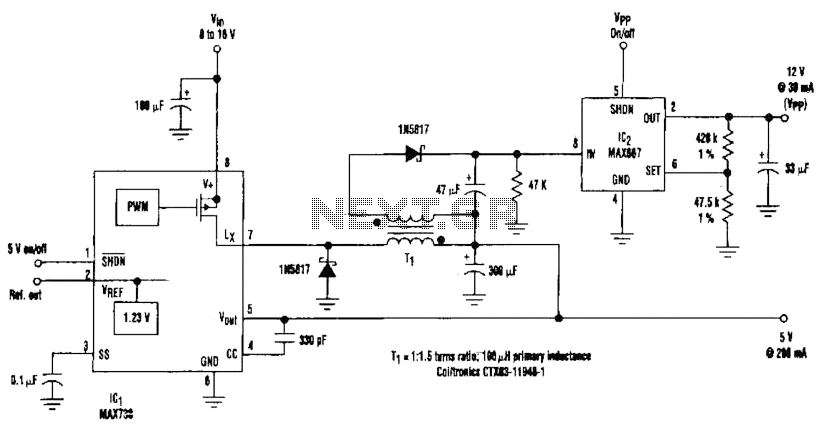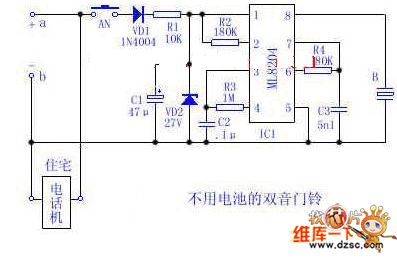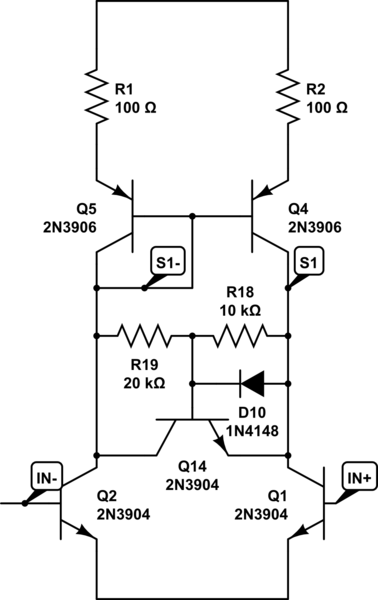
THREE INPUT TWO OUTPUT MIXER
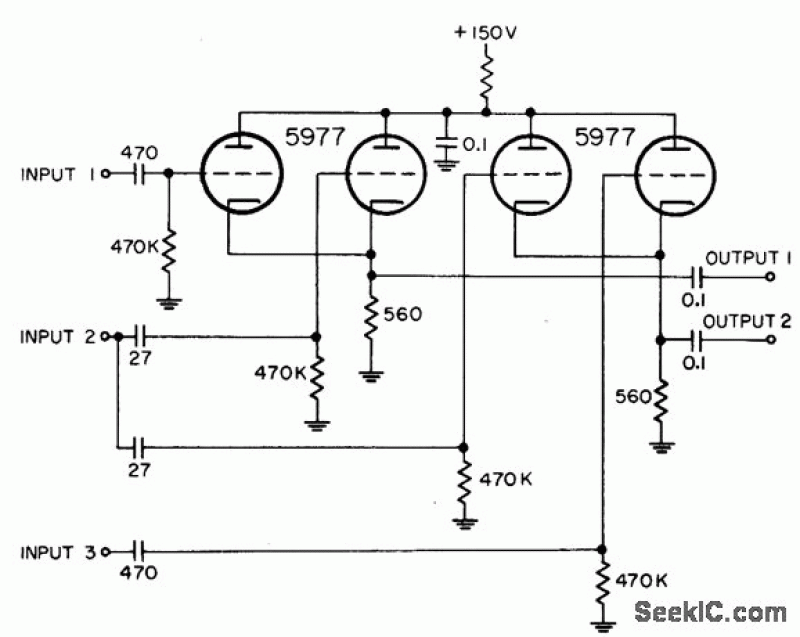
Utilizes two distinct common-cathode video mixers. Identical heading markers are inserted into the front input 2 of both mixers, while the other inputs manage independent markers.
The circuit employs two common-cathode video mixers, which are integral components for combining multiple video signals while maintaining the integrity of the individual signals. Each mixer operates independently, allowing for flexibility in signal processing. The design incorporates identical heading markers at the front input 2 of both mixers, ensuring that both channels are synchronized for a cohesive output.
The remaining inputs of the mixers are dedicated to handling independent markers, which allows for the integration of various signal sources without interfering with the primary synchronization provided by the common markers. This configuration is particularly useful in applications where multiple video feeds need to be processed simultaneously, such as in broadcasting or complex video editing environments.
The use of common-cathode mixers is advantageous due to their ability to provide high linearity and low distortion when combining signals. These mixers typically consist of transistors or operational amplifiers configured to operate in a common-cathode arrangement, which enhances performance by improving signal fidelity.
The reference to the "Hand-book Preferred Circuits Navy Aeronautical Electronic Equipment" indicates that this design is grounded in established practices, ensuring reliability and effectiveness in high-stakes environments such as aeronautics. The publication from 1963 serves as a historical context, showcasing the long-standing relevance of these circuit designs in electronic engineering. Overall, this circuit design exemplifies a robust approach to video signal processing, suitable for a variety of applications where precision and reliability are paramount.Uses two separate common-cathode video mixers. Same heading markers are inserted into both mixers front input 2, while other inputs handle independent markers. -NBS.
The circuit employs two common-cathode video mixers, which are integral components for combining multiple video signals while maintaining the integrity of the individual signals. Each mixer operates independently, allowing for flexibility in signal processing. The design incorporates identical heading markers at the front input 2 of both mixers, ensuring that both channels are synchronized for a cohesive output.
The remaining inputs of the mixers are dedicated to handling independent markers, which allows for the integration of various signal sources without interfering with the primary synchronization provided by the common markers. This configuration is particularly useful in applications where multiple video feeds need to be processed simultaneously, such as in broadcasting or complex video editing environments.
The use of common-cathode mixers is advantageous due to their ability to provide high linearity and low distortion when combining signals. These mixers typically consist of transistors or operational amplifiers configured to operate in a common-cathode arrangement, which enhances performance by improving signal fidelity.
The reference to the "Hand-book Preferred Circuits Navy Aeronautical Electronic Equipment" indicates that this design is grounded in established practices, ensuring reliability and effectiveness in high-stakes environments such as aeronautics. The publication from 1963 serves as a historical context, showcasing the long-standing relevance of these circuit designs in electronic engineering. Overall, this circuit design exemplifies a robust approach to video signal processing, suitable for a variety of applications where precision and reliability are paramount.Uses two separate common-cathode video mixers. Same heading markers are inserted into both mixers front input 2, while other inputs handle independent markers. -NBS.
"Hand-book Preferred Circuits Navy Aeronautical Electronic Equipment, " Vol. 1, Electron Tube Circuits, 1963, p N4-3.
🔗 External reference